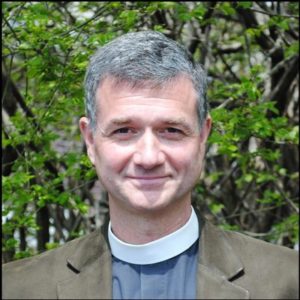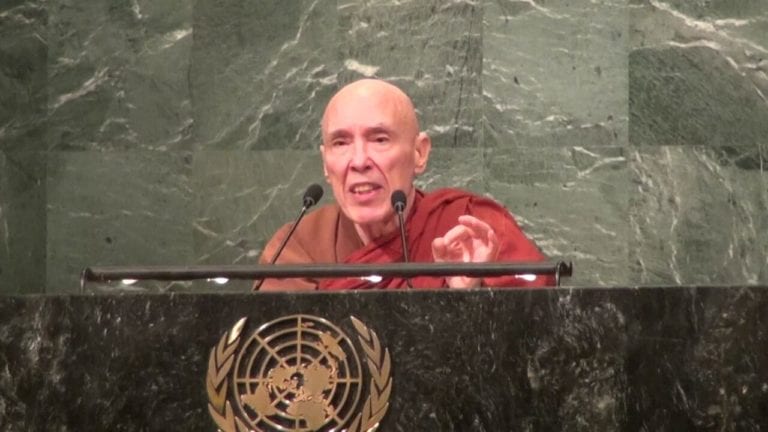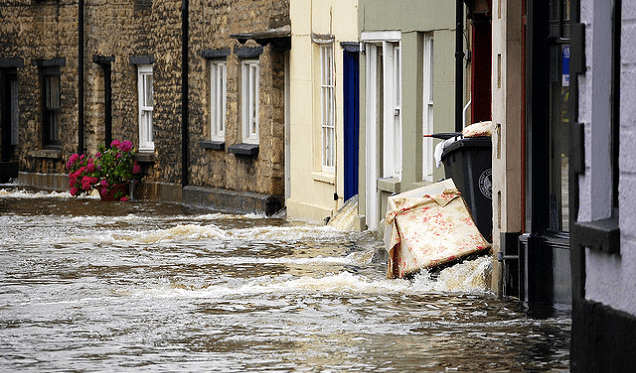To say the least, world religions have had a mixed track record when it comes to moving forward the causes of justice, peace and the protection of all that is sacred. So we can rejoice the growing movement of faith groups who are calling all of us to put aside that which divides and answer the moral call of our time: swift, decisive action on climate change.
In the essay below, Reverend Fletcher Harper, executive director of GreenFaith, invites all of us to join together for global events on June 12 and articulate our common cause, our sacred Earth, our sacred trust. Members of our community are invited to share with us here at One Earth Sangha any events you will be part of and we will share those back out for others to join. It’s another chance to show ourselves and the world what we are willing to stand for.
During the week of June 12, the 6-month anniversary of the Paris Agreement, people of all faiths and spiritualities will send a message to world leaders through a mobilization called Sacred Earth, Sacred Trust. The message: we must accelerate our response to climate change in order to limit global temperature rise to 1.5°C above pre-industrial levels.
Faiths Rising
The faith community played a vital role in the lead-up to the Paris climate talks. This leadership continues to grow. Last month, more than 270 clergy from diverse faiths signed the Interfaith Climate Change Statement, which was presented to the President of the UN General Assembly just days before world leaders signed the Paris Agreement. These faith leaders called for the quick signing and ratification of the Paris Agreement and for leaders to make the drive for 1.5°C a priority.
Now, research just recently released has added to urgency to the 1.5°C temperature limit.
What a Difference a Half Degree Makes
In the 1990s, a scientific consensus emerged that a 2°C temperature rise was a safe limit to global warming. 350, perhaps the best-known number in the climate movement, gained currency because an atmospheric concentration of no more than 350 parts per million (ppm) of CO2 provides a two-thirds chance to keep temperatures below this level. Currently, CO2 levels top 400 ppm.
However, there has always been concern that 2°C was too high. Least developed countries and small island states argued that 2°C meant the sacrifice of their homelands. They were joined by advocates for the poor, faith communities, a 2015 report from the Intergovernmental Panel on Climate Change and other experts who argued for a 1.5°C guardrail. Last December at COP 21, to the surprise of pundits and politicians alike, an alliance of over 150 countries came together in support of the 1.5°C target. As a result, in the Paris Agreement governments agreed to “hold the increase in the global average temperature to well below 2°C above pre-industrial levels and pursue efforts to limit the temperature increase to 1.5°C.”
1.5 to Stay Alive
On April 21 last month, the day before Earth Day and the signing of the Paris Agreement, a study in Earth System Dynamics laid out the catastrophic difference between 1.5°C and 2°C. The study considered 11 indicators such as extreme weather events, water availability, crop yields, coral reef degradation and sea-level rise. The result? A seemingly insignificant half degree makes all the difference in the world.
A half-degree of extra warming will double the number of water shortages in the Mediterranean region by the century’s end. Staple crop yields in Central America and West Africa will drop by 50%. Sea levels will rise an additional ten centimeters by 2100, threatening the actual viability of many of the world’s largest cities, such as Bangkok and its 8.5 million inhabitants. All coral reefs, home to much of the oceans’ biodiversity and the source of protein and livelihood for over half a billion people, will face “severe degradation.” All these impacts show the contrast between 1.5°C and 2°C.
These impacts are a litany of lamentation and suffering. They spell disaster for the world’s poorest communities. Under any standard of decency, they are tragic, abhorrent and unacceptable.
Conversely, a 1.5°C temperature rise would give hundreds of millions of the world’s poorest people, and ecosystems , a chance to adapt and survive. Tony de Brum, the Foreign Minister of the climate-threatened Marshall Islands, said it most starkly, “For us, it’s 1.5 to stay alive.”
Sacred Earth, Sacred Trust
That is why on June 12, people of all faiths and spiritualities will join in solidarity with those at greatest risk the world over, pledging to push for greater climate action to limit temperature rise to 1.5°C. We will give thanks to the earth’s abundant blessings, share our amazement at how wonderful the planet is and express our outrage at the extent of its destruction.
Actions are already planned in Bogota and Santiago, New Orleans and the Dominican Republic, Nairobi, Hong Kong and New Delhi. Some people will offer a prayer or reflection, the one offered below or another of their choosing. Some will share a photo of themselves with a small sign saying, “Sacred Earth, Sacred Trust – 1.5°C to Stay Alive.” Others might draw ‘1.5°C to Stay Alive’ in the sand, on a mural. If you post an image using #SacredEarth2016, we will share it with the world. Information, prayers and materials are at www.sacredearth2016.org.
We live on a sacred earth. For people of faith, the implications of this are clear. We will honor our sacred trust as earth’s guardians. We will increase our collective sense of urgency. We will persevere in our journey from ignorance to knowledge and from silence to action.
And, we will continue the awakening that saw so many people of faith take action on climate change in 2015. I urge you to sign up and to take part in Sacred Earth, Sacred Trust.
Sacred Earth, Sacred Trust – A Prayer
Source of all goodness and all life, we offer our thanks for this sacred earth. The natural world is a precious gift. We often forget that we are one earth, one human family. Today, we celebrate this fact.
We have a sacred trust to care for our common home. Climate change is disrupting the world’s natural balance. Seasons are coming at the wrong times. Storms are more dangerous than before. The poorest, whom our faith tells us to protect, suffer. We must care for each other.
It is our sacred duty to protect the vulnerable, to provide for the future of our children, to show compassion to the earth. Today, we accept this responsibility. We ask for the strength to change ourselves and to care for the world.
This essay was originally published on Huffington Post and is reprinted here with permission.






